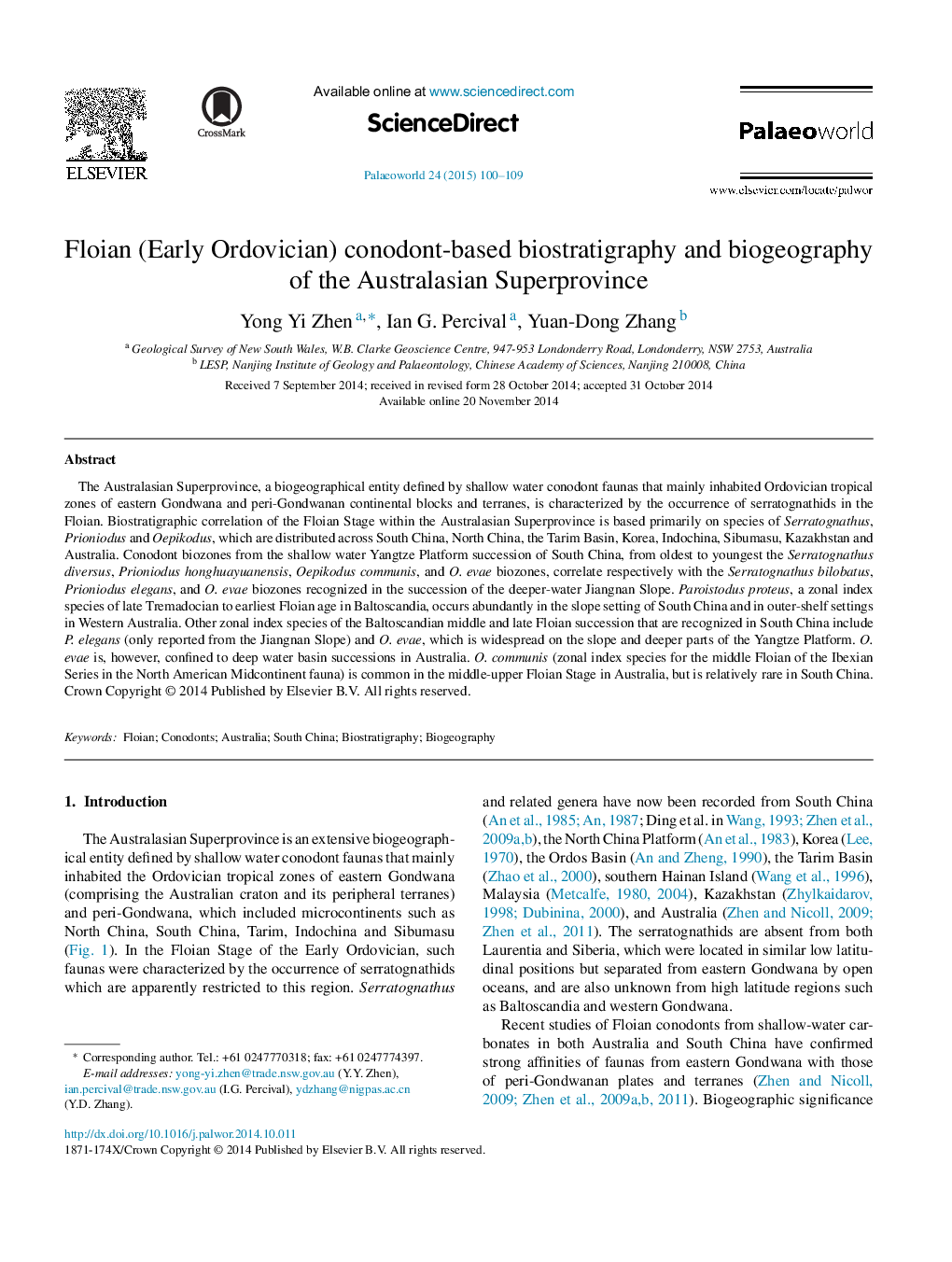| Article ID | Journal | Published Year | Pages | File Type |
|---|---|---|---|---|
| 4749625 | Palaeoworld | 2015 | 10 Pages |
The Australasian Superprovince, a biogeographical entity defined by shallow water conodont faunas that mainly inhabited Ordovician tropical zones of eastern Gondwana and peri-Gondwanan continental blocks and terranes, is characterized by the occurrence of serratognathids in the Floian. Biostratigraphic correlation of the Floian Stage within the Australasian Superprovince is based primarily on species of Serratognathus, Prioniodus and Oepikodus, which are distributed across South China, North China, the Tarim Basin, Korea, Indochina, Sibumasu, Kazakhstan and Australia. Conodont biozones from the shallow water Yangtze Platform succession of South China, from oldest to youngest the Serratognathus diversus, Prioniodus honghuayuanensis, Oepikodus communis, and O. evae biozones, correlate respectively with the Serratognathus bilobatus, Prioniodus elegans, and O. evae biozones recognized in the succession of the deeper-water Jiangnan Slope. Paroistodus proteus, a zonal index species of late Tremadocian to earliest Floian age in Baltoscandia, occurs abundantly in the slope setting of South China and in outer-shelf settings in Western Australia. Other zonal index species of the Baltoscandian middle and late Floian succession that are recognized in South China include P. elegans (only reported from the Jiangnan Slope) and O. evae, which is widespread on the slope and deeper parts of the Yangtze Platform. O. evae is, however, confined to deep water basin successions in Australia. O. communis (zonal index species for the middle Floian of the Ibexian Series in the North American Midcontinent fauna) is common in the middle-upper Floian Stage in Australia, but is relatively rare in South China.
